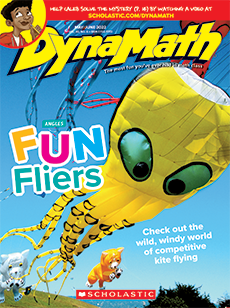In September 2021, a rocket launched from Florida into space. It was carrying four Americans. But they weren’t NASA astronauts. They were civilians: regular people without official NASA training! Called Inspiration4, the mission was the first spaceflight ever made without a professional astronaut on board.
Among the crew was chief medical officer Hayley Arceneaux (AHR-sen-oh). At only 29 years old, she’s now the youngest American to travel to space. She’s also the first astronaut with a prosthesis, or artificial body part!
A rocket launched from Florida into space in September 2021. It was carrying four Americans. But they were not NASA astronauts. The people on board were civilians. Civilians are regular people without NASA training! The mission was called Inspiration4. It was the first spaceflight ever made without a professional astronaut on board.
Hayley Arceneaux (AHR-sen-oh) was part of the crew. Her role was chief medical officer. Arceneaux is 29 years old. She is now the youngest American to travel to space. She is also the first astronaut with a prosthesis! A prosthesis is a human-made body part.
